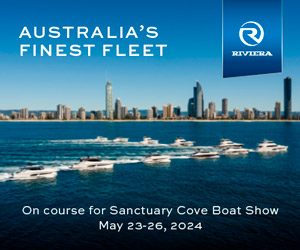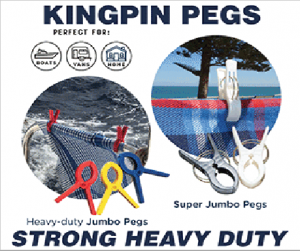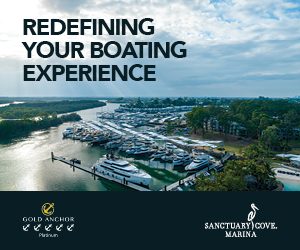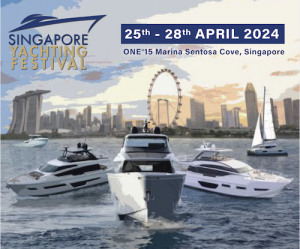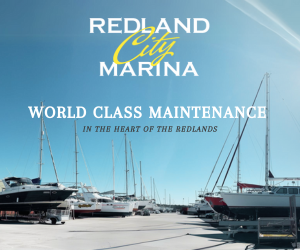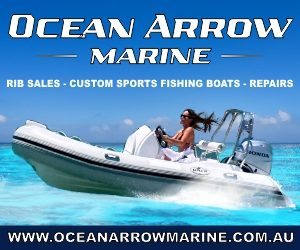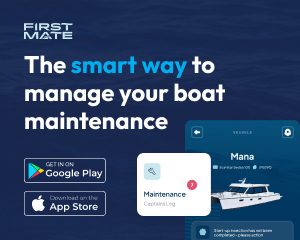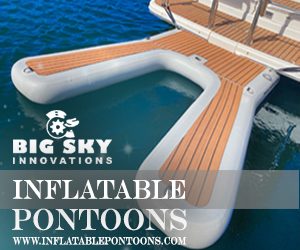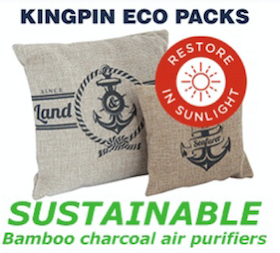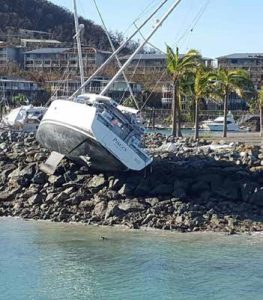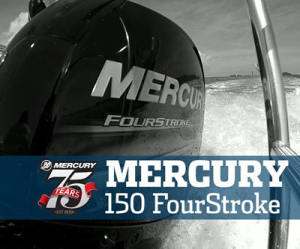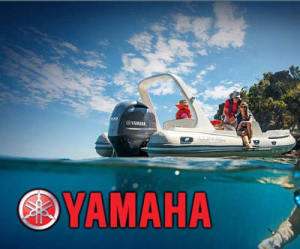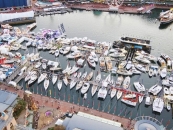Regardless of where you live you can expect to be hit with severe weather once in a while. Whether it’s some wilder winds hitting the region or a highly destructive cyclone, the following methods are a must for storm protection. In 2017 we were reminded of the magnitude of power nature can bestow on us with the destructive events in North Queensland and the Caribbean. Let’s take a little recap and review what you as a responsible boatie can do in these unpredictable situations.
Cyclone Debbie
In March 2017 cyclone Debbie hit the north coast of Australia and left significant amounts of damage. Boaties particularly felt the effects of the storm with their vessels, marinas and waters all impacted. The Pantaenius team were amongst the first insurance representatives to see the affected areas, travelling up to (Airlie/Hamilton), where Debbie hit the hardest. We saw the damage first hand and we worked with our insured over the following 18 months to resolve all claims.
In short, cyclone Debbie’s aftermath was significant. This natural disaster turned lives upside down, resulting in the affected having to spend many months rebuilding their assets and lives. Being at the scene, ready to assess the damage and assist our fellow boaties, we were confronted with the lot. Many things were quite shocking to see, but what we were very taken back by was how little preparation some clients had done. With the knowledge of Debbie’s presence and movement 5 days prior to her arrival, we had expected much more effort to protect their assets.
Many used the excuse of living in the Southern States or that they simply ‘didn’t know,’ both invalid excuses. There were plenty of people on the ground that could prepare your boat if you could not. You see, at the end of the day there is a responsibility that lies squarely with you, the insured. Your insurer is in partnership with you, but in reality, would you expect a partner to remain beside you if you were negligent? The notion that insurance will take care of it all is not entirely correct. In the partnership, you do have responsibilities. They stem from basic seamanship, and are referred to in most marine PDS’.
Preparing for the storm season
There is plenty of reading material out there about how to prepare for dangerous weather events, because at the end of the day they aren’t exactly uncommon. Here at Pantaenius there is some basic procedures we follow and encourage others to take on board to ensure possible damage is minimised, see below.
Double up on all lines
Use extra line to double up the spring and bow lines. Make sure the lines are in good condition and are of appropriate size.
Position slip lines so that they reach higher up on the pilings. This aids in keeping the boat in place when the weather hits, and the water level rises.
Strip away canvas and sails
Remove all sails and remove all sail covers, dodgers, enclosures, Biminis etc. Don’t leave any canvas products on your vessel.
- Remove any windage that could cause the boat to ‘sail’ during hasty winds
- Take this sailing gear off the vessel
- Remove or sink dinghies
- Clear the deck of dinghies!
If you have a hard dinghy then take it home with you or pull the boat plug and sink it in shallow water to shield it from potential damage.
Dinghy’s must NOT be left on davits.
Hang out extra fenders
Put out extra horizontal fenders onto pilings and the hull where contact can be expected. If moored stern first then hang vertical fenders across the stern. Extra vertical fenders should also be hung on the side next to finger piers. Make sure fenders are of suitable size and are in good condition. Deflated fenders are of no value.
Add chafing gear
Synthetic docking line has elasticity that allows it to spring back and forth when under pressure. This action combined with the presence of sharp chocks can see an anchor or dock line completely cut through.
To avoid this use sandpaper to smooth the edges of chocks. Furthermore, use rags, canvas, split hose or PVC tubing where it passes over a rub rail/toe rail or through a chock.
Seal the seacocks
Shut off all seacocks (turning the handle perpendicular to the hose), this includes the head intake, sink and shower drain, engine raw water intake and head overboard discharge seacocks. The EXCLUSION to this is the cockpit drain seacocks which drain rain water.
Batten and tape hatches
Secure all hatches and opening ports and tape around the inside edges for extra protection against water intrusion.
Secure Electronics, Charge Batteries, Check Pumps
Shut down and if possible disconnect all the electronic equipment, (this will save the electronics in the event of a lightning strike which is not uncommon with Tropical Storms), besides the bilge pumps- ensure batteries are fully charged to run the pumps. Test the float switch on each bilge pump by lifting the float switch tab which should case the pump to start within a few seconds.
Anchors
When anchoring in the mangroves use as many anchors and lines attached to the mangroves as possible. Make sure all lines are of suitable size and are in good condition. Following these guidelines can really reduce the impact wild weather can have on your boat and your wallet. Furthermore it will minimise the potential damage to the property of others. Overall, the simple but effective approaches to securing your vessel can truly make a difference in its preservation whilst also helping you comply with the agreement you have with your insurer.
Have a safe and happy season!
AM I COVERED?
Above and below Mooloolaba. It’s as simple as that. When it comes to boating in South East Queensland, where your boat is relative to that town is all you need to consider in relation to the need to have a tropical named storm clause in your insurance policy. So the hands have shot up immediately, and they’re all asking the same question. ‘So is Mooloolaba itself considered South or North?’ Answer: It’s part of South in a policy from Pantaenius, whose position on the matter has always been thus. If you are on the Gold Coast, Brisbane, or Moreton Bay, and up to Peregian Beach (4573), which is actually the line of demarcation, then that is all South, and you do not need a tropical named storm clause in your policy. Ever. Even if the remnants of a cyclonic depression attack the most populace region of Queensland.
Now the storm season is defined as November 1 to May 1 each year, so then as long as you’re back below Postcode 4573 for that period after your soirée in the sun, you will not need to worry about your policy containing such a clause. Provided of course you have both the North and South Cruising regions listed. If not, simply call the team at Pantaenius and have North added for the Winter cruising season for just a small additional premium. Remember, insurance is a partnership, not a right, so be open and honest about your usage and plans, and there will never be any surprises.
Those hands that are still up are all after the answer to the next question, ‘So just what is a tropical named storm then?’ Well, on average, Australia has about 10 of these a year, and each year 21 names are selected by the Bureau of Meteorology and listed in alphabetical order, and then used as the tropical cyclones develop.
These storms develop in the equatorial band between the Tropic of Cancer and the Tropic of Capricorn, which are roughly 23.5 degrees above and below the equator, respectively. Now it is important to note that your Pantaenius policy uses what is effectively 26.5 degrees as the point of delineation between the two zones, so please make sure you fully comprehend the differences. Three degrees sounds small, where as 180 nautical miles is a 24-hour passage averaging 7.5 knots the whole way, or the difference between being at Rockhampton and Peregian Beach. Not so small after all, huh?
Uptake.
So just to be totally clear, if you go boating below Peregian Beach and you’re insured with Pantaenius, then you do not need a storm clause. Ever. No matter what Mother Nature might decide to throw at you.
Now the really interesting point is that does not preclude you from doing the right things like taking down furling sails, adding extra mooring lines and fenders, taking off the tender and sinking it if it is alloy (with the outboard off naturally), removing clears and breezeways, boom bags, clearing scuppers, and so on.
Because if it is going to be that bad, then just common sense and bit of nautical nous will help you avoid a significant claim, and lengthy wait for the required trades to be available to fix it all. Memory helps in this regard. During Debbie, a very, very heavy ketch unfurled its Genoa and just about took the marina with it all the way to the beach. It broke free eventually, caused untold damage all along its path, and then installed itself like some artistic sculpture about three metres up the beach.
And it is not just yachts. Large cruisers with biminis and clears can easily do likewise, and then bent shafts, skegs ripped out of hulls, and rudders now two feet further aft thank is normal all amount to a very lengthy and costly repair. In the end it is a bit like the old sign at a motel of yesteryear that reads, “Welcome to the Ool. You’ll notice there is no ‘P’ in our pool. Please keep it that way.” Now what it all means is that everybody with marine policies ends up in the same pool. So if you want to be invited back, and have a premium that is fair and reasonable, then look after the place you play in to the best of your ability, and leave it as you found it, notwithstanding the strength of the elements you encounter.
So relax. You’re insured with Pantaenius, and that means that if you are in the South region you have storm coverage automatically, and isn’t that just nice…
Published in print January-March 2024


